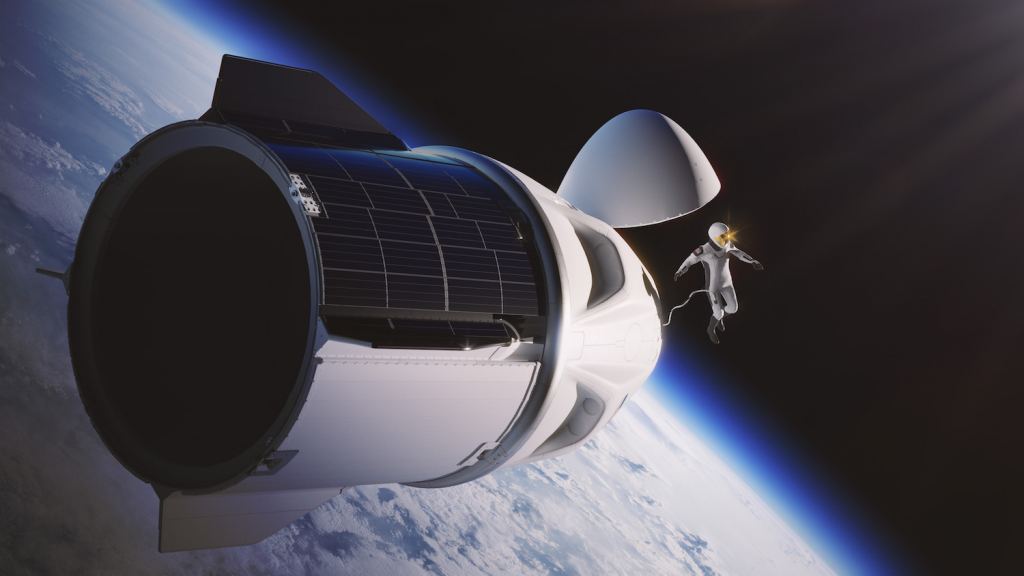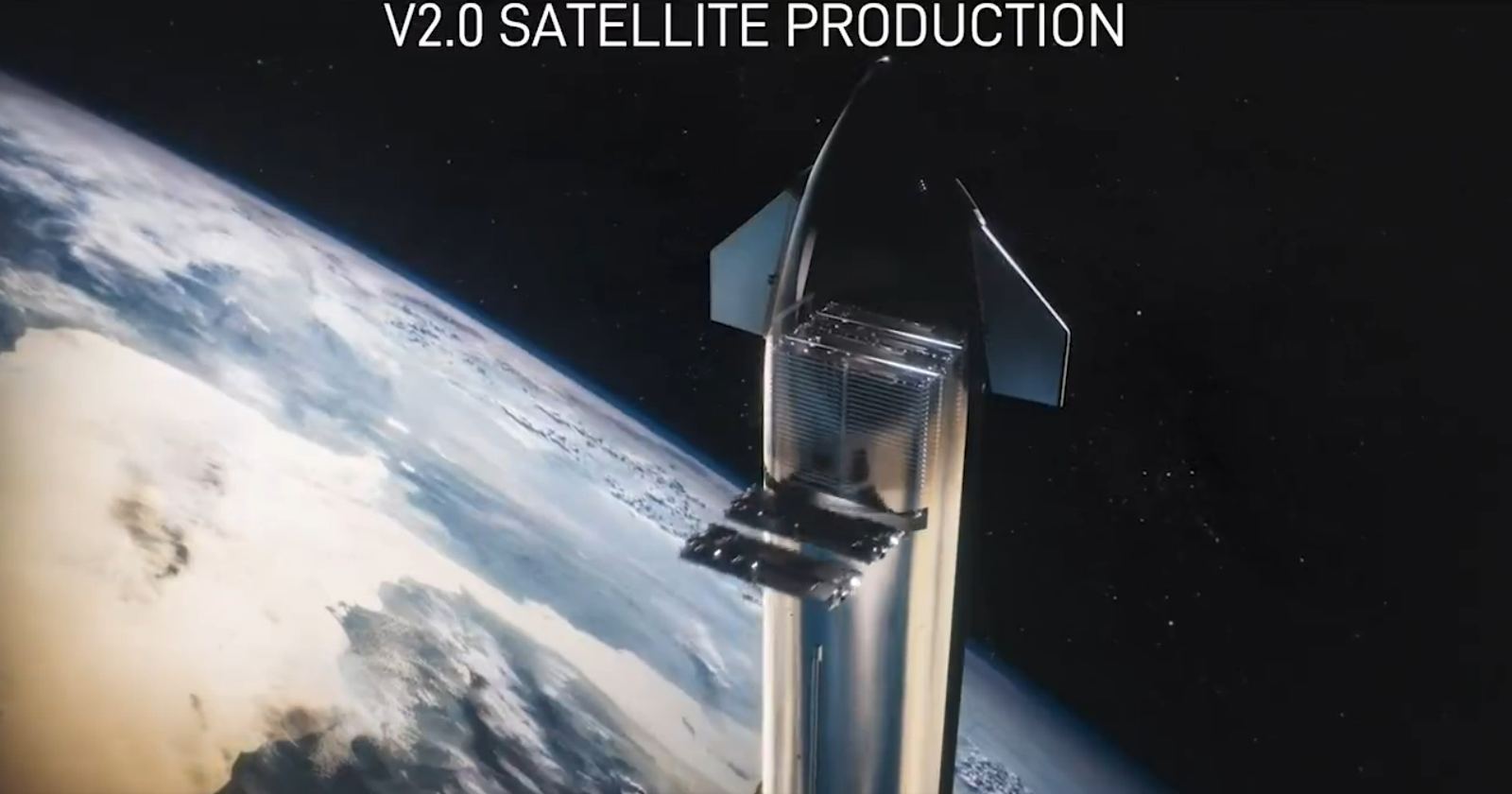SpaceX’s massive and totally-reusable launch vehicle, the Starship and Super Heavy, is getting closer to its first orbital test flight! According to the flight plan filed with the Federal Communications Commission (FCC), this will consist of a fully-stacked spacecraft and booster prototype (SN24 and BN7) taking off from the SpaceX Starbase near Boca Chica, Texas. The booster element will separate at suborbital altitude and land off the coast of Texas, while the Starship will carry on to an altitude of 200 km (125 mi), placing it in Low Earth Orbit (LEO).
With this milestone in its rearview, SpaceX will have fully validated its super-heavy launch system and be ready to conduct crewed flights. According to previous statements by Musk, these flights will include payloads and crews destined for the Moon and Mars. During the SpaceX All-Hands Meeting – which took place on Sunday, June 5th – Musk showed how the Starship will also be used to deploy Starlink satellites like a “Pez dispenser.” This announcement and the slideshow presented at the meeting were shared by Musk via Twitter shortly thereafter.
As indicated in the slideshow, SpaceX has had a banner year on top of banner years! Among its accomplishments, the company has come a long way in terms of launches and retrievals, human spaceflight, the deployment of its Starlink broadband satellite constellation, the development of the Starship, and the construction of the Starbase factory facility at Boca Chica. But it was perhaps the animation of the Starship deploying Starlink satellites that was particularly attention-grabbing.
Starship & Starlink
In what appeared as an emphatic illustration, the animation shows a Starship deploying next-generation Starlink satellites in orbit above Earth. A cutaway reveals that its forward payload section is loaded with Starlink satellites, captioned by the words “V2.0 Satellite Production.” This section comes after slides that recap the company’s success with the broadband internet service to date, which includes the over 500,000 users worldwide, and the fact that the meeting coincided with the third anniversary of the deployment of the first batches (V0.9).
In the animation, we see the satellites stacked inside the spacecraft in their folded-flat configuration and spat out through a slender aperture in the side. The “Pez” comparison is quite apt (as would the term “machine gun”) as the satellites are vertically stacked, and a new one is loaded the moment the one beneath it is fired. Another key detail is the top-mounted solar panels that begin to glow after the perspective shifts and the satellites are hit by direct sunlight. Interestingly, this segment accounts for roughly a quarter of the video’s overall runtime – 42 seconds from just over 2 minutes.
This would appear to indicate that this aspect of the company’s future, where the Starship is committed to deploying Starlinks V2.0s, is one that Musk is particularly concerned with right now. Musk spoke about this next-generation satellite on a recent episode of Everyday Astronaut (uploaded on May 26th) and how the development of the Starship was crucial to their deployment:
“It’s the only thing that can carry the Starlink Two satellites. We’ve already produced the first, and we have on-site, the first Starlink Two and it’s seven meters long (23 ft). [The] Falcon [9] has neither the volume nor the mass-to-orbit capability required for Starlink Two. So even if we shrunk the Starlink Two down, the total upmass of Falcon is not nearly enough to do Starlink Two.”
The Starlink V2.0 weights 1,250 kg (2,760 lb), about four times the mass of the operational V1.0 and 1.5 versions. Musk also explained in the episode that the Starlink V2.0 would be “almost an order of magnitude more capable than V1.0” in terms of communications bandwidth. It’s little wonder why this aspect of the company’s future was so heavily featured in the slideshow, as it involves two key SpaceX programs. Similarly, according to a recent CNBC article that cited SpaceX employees, Musk pushed the date for a Starlink IPO down the road again (likely 2025 or later).
This occurred during a company meeting that reportedly took place on Thursday, June 2nd (just three days before the All-Hands Meeting). Basically, the success of the Starship and Starlink are interconnected, and Musk is faced with the tough question of when to take the latter public. Given the importance of Starlink for SpaceX’s long-term vision (financing missions to Mars), Musk appears to be taking the cautious approach – i.e. holding off on an IPO until the Starship can show it can rapidly replace lost satellites and patch holes in coverage.
Other Highlights
Other accomplishments were highlighted during the slideshow. First, there’s how SpaceX has managed to establish a launch cadence that is the envy of every other commercial space company on the planet – averaging one launch per week. They’ve also established a highly respectable launch and recovery record, with 160 successful flights, 122 successful retrievals, and 98 reflights (where retrieved boosters were reused). They also established a record for turnaround time between launches (21 hours) and managed to conduct four flights with the Falcon Heavy in 2022 alone.
In terms of human spaceflight, the slideshow lauded the company’s many strides. Of course, these included the decade-worth of payload deliveries to the International Space Station (ISS) using the Dragon spacecraft, the first all-civilian flight to the ISS (Axiom-1). Curiously, there was no mention of the Crew Dragon (Dragon 2) missions that brought astronauts to the ISS as part of the Commercial Crew Program (CCP) and effectively restored domestic launch capability to the U.S. (What gives Elon? That was huge!). However, there was a teaser slide that mentioned the proposed commercial spacewalk – aka. the Polaris Dawn mission.

Last, but not least, the slideshow features the milestones achieved with the Starship and Super Heavy launch system, which include the completion of the Ship 24 and Booster 7 prototypes (aka. SN24 and BN7) and the Raptor 2.0 engine that will take both of them to space. We also see the giant mechanical arm (“Mechazilla“) stacking the SN24 on top of BN7, which will also be responsible for “catching” boosters upon their return to the launch facility. The last slide shows the upgraded and expanded Starbase Factory where Starships will be assembled en masse in the near future.
Regardless of public opinion over Musk’s recent activities (the Twitter deal and his public statements on “wokeism” come to mind!), there is no doubt that the company he built has had a long and fruitful history. And while the timelines he has provided in the past have always been on the optimistic side, he has a demonstrable aptitude for getting things done. Since its inception in 2001, SpaceX has made some very impressive strides, become the leading innovator of the NewSpace industry, and accomplished what many said could not be done.
They’ve also blazed a trail that many have followed, bringing new ideas and innovation to a burgeoning marketplace that is ensuring humanity’s future in space. It will be very exciting to see what comes of it in the next twenty years. Grab some popcorn and take a seat because it’s all happening soon!


‘Starlink V2.0 would be “almost an order of magnitude more capable than V1.0”’ I wonder what magnitude it will shine in the night?
Makes sense with the increased factor 10 capability. CGI proposed almost 60 Starlink V2.0 per launch and even if it is optimistic it would be more capability than the estimated 400 V1.0 Starship capability would have had.
@Ceres: Does it matter? It isn’t the primary nightly light pollution for humans or animals, and scientists have little problem with the typical 1-2 percent capability loss after software correction. (They can use permit fees to recuperate lost science money at that. But that’s for governments to decide.)